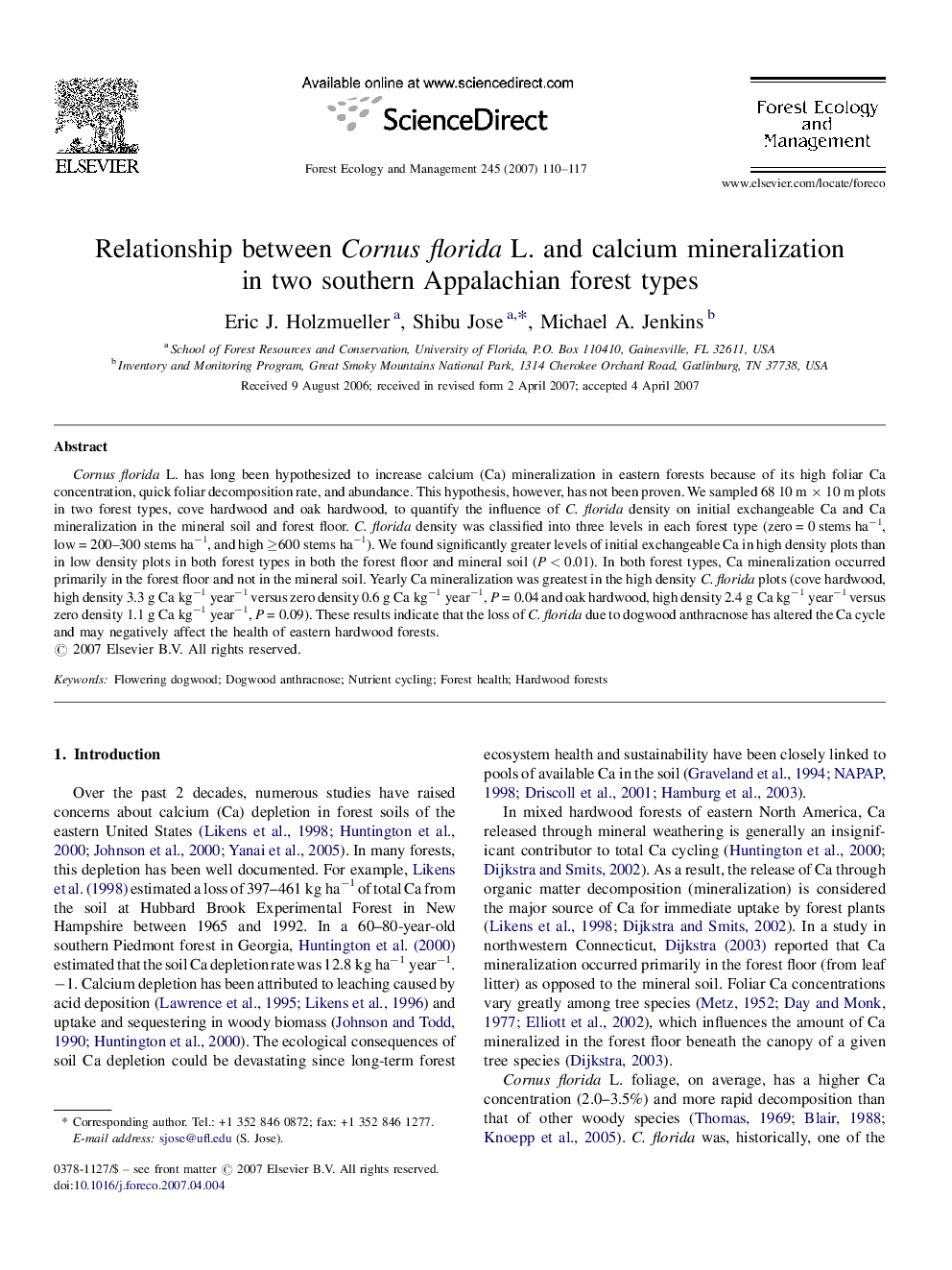| Article ID | Journal | Published Year | Pages | File Type |
|---|---|---|---|---|
| 89677 | Forest Ecology and Management | 2007 | 8 Pages |
Cornus florida L. has long been hypothesized to increase calcium (Ca) mineralization in eastern forests because of its high foliar Ca concentration, quick foliar decomposition rate, and abundance. This hypothesis, however, has not been proven. We sampled 68 10 m × 10 m plots in two forest types, cove hardwood and oak hardwood, to quantify the influence of C. florida density on initial exchangeable Ca and Ca mineralization in the mineral soil and forest floor. C. florida density was classified into three levels in each forest type (zero = 0 stems ha−1, low = 200–300 stems ha−1, and high ≥600 stems ha−1). We found significantly greater levels of initial exchangeable Ca in high density plots than in low density plots in both forest types in both the forest floor and mineral soil (P < 0.01). In both forest types, Ca mineralization occurred primarily in the forest floor and not in the mineral soil. Yearly Ca mineralization was greatest in the high density C. florida plots (cove hardwood, high density 3.3 g Ca kg−1 year−1 versus zero density 0.6 g Ca kg−1 year−1, P = 0.04 and oak hardwood, high density 2.4 g Ca kg−1 year−1 versus zero density 1.1 g Ca kg−1 year−1, P = 0.09). These results indicate that the loss of C. florida due to dogwood anthracnose has altered the Ca cycle and may negatively affect the health of eastern hardwood forests.
